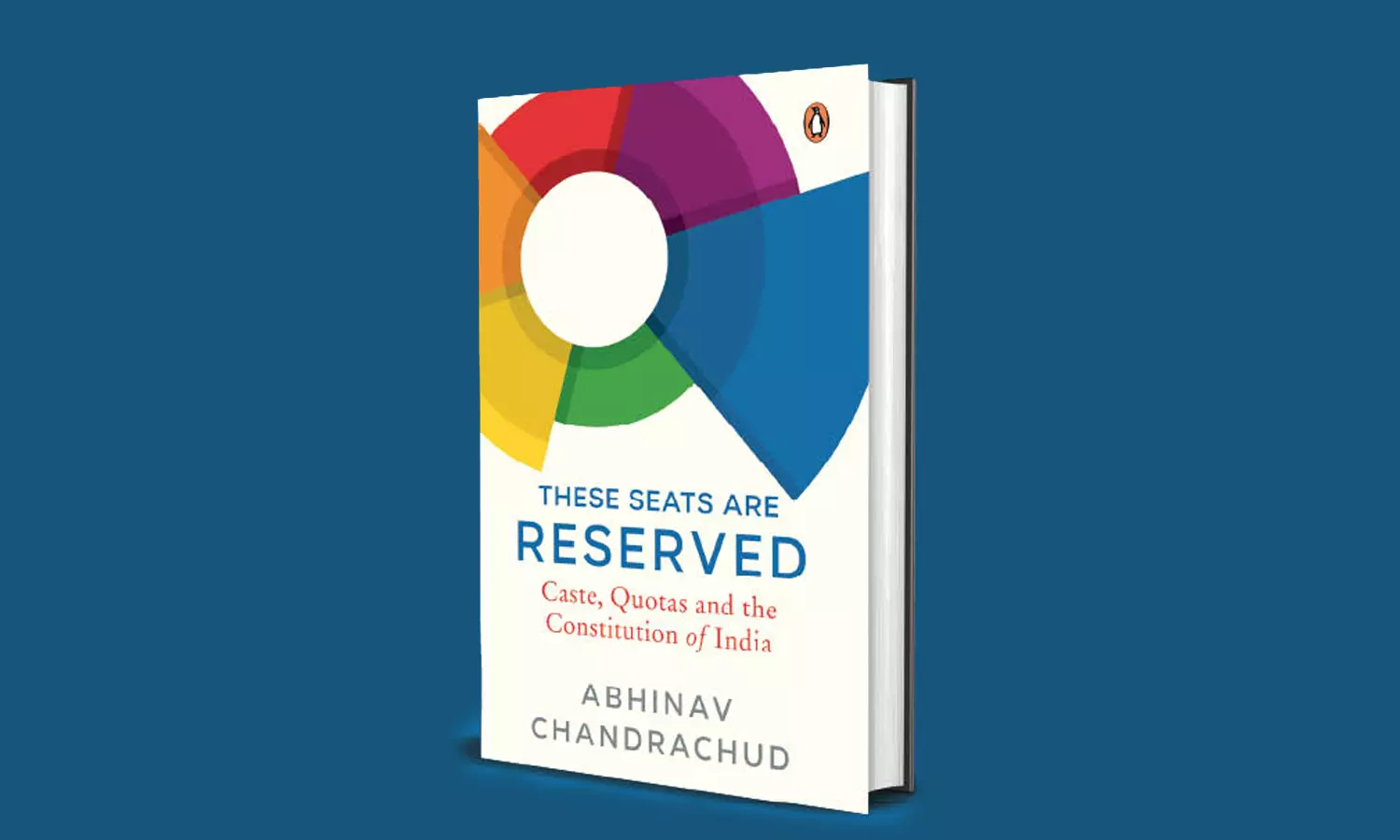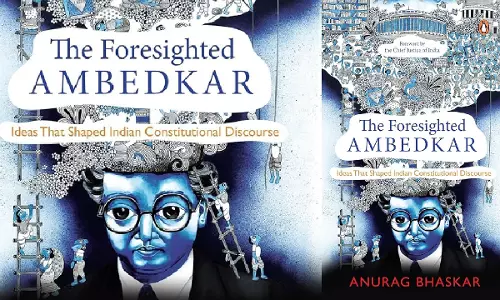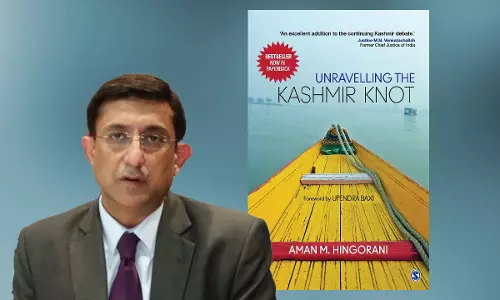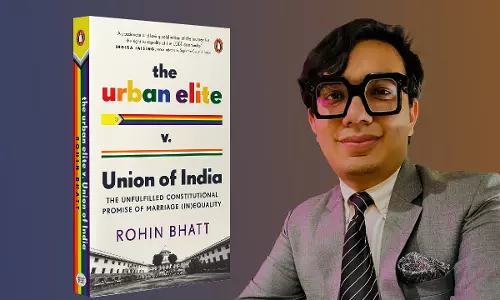Book Review: These Seats Are Reserved: Caste, Quotas: Caste, Quotas And The Constitution Of India By Abhinav Chandrachud

American political philosopher Michael Sandel in his book, The Tyranny of Merit: What's Become of the Common Good? raises a fundamental question—would a perfect meritocracy be just? He himself answers the question in negative based on the following reasoning—the meritocratic ideal does not remedy inequality rather justifies it. But inequality, even of the type that results because of...
American political philosopher Michael Sandel in his book, The Tyranny of Merit: What's Become of the Common Good? raises a fundamental question—would a perfect meritocracy be just? He himself answers the question in negative based on the following reasoning—the meritocratic ideal does not remedy inequality rather justifies it. But inequality, even of the type that results because of merit, is not justified for it “ignores the moral arbitrariness of talent and inflates the moral significance of effort.” Considering the Indian Constitutional Jurisprudence the debate over Reservation (Quota) versus Merit has been consistently invoked in socio-political discourse from the pre-independence era.
Recently the 103 rd Constitutional Amendment sparked another round of discourse in the Indian reservation jurisprudence which confer 10% reservation in favour of the Economically Weaker Section (EWS), before that reservations were only given based on social and educational backwardness. And the general notion was that reservation should not exceed 50% of total available seats but 103 rd amendment raised this to 60%.Also, Government of Bihar conducted Caste Census and followed by that increased the area of reservation from 50% to 65% for the marginalized communities. Another important issue pertaining the reservation policies is that there has been a long-standing debate over subcategorization of SC/ST. For thatSupreme Court has reserved its judgement and will pronounce the same soon. Against these backdrops, it is instructive to read “These Seats Are Reserved: Caste, Quotas: Caste, Quotas and the Constitution of India” written by Abhinav Chandrachud.
Layout of the Book
Apart from introduction and conclusion the book has been divided into seven chapters, first three chapters deals with the historical account of reservation policies in India from the colonial times onwards till the independence. Thebook begins by tracing the evolution nomenclature like “depressed class” which was used by the colonial government as a euphuism to describe the Schedule Caste and Schedule Tribes communities. Covers the first census report conducted by the census commissioner J.H Hutton in 1931. It tells according to the census of 1931, depressed class is a group of people within the Hindu fold
who is suffering from social disabilities, such as being denied 'access to
temple', have to use 'separate wells', and not being allowed to sit insides a schoolhouse. Access to these three things—temples, wells, and schools—was a definite criterion in determination of depressed classes. Aso, according to the census report of 1931, in addition to the untouchability backwardness was also essential for being part of depressed classes. Followed by the same yard stick, some untouchables like Iruvans from Cochin and the Shahas, Telis and Mahishyas of Bengal and Assam were not considered to be the part of depressed classes. Because many of the community people were educated and had build-up for themselves a strong position which obviates the need of any special measures for their social, religious, or political protection. Muslims and Christians were also excluded from the list of depressed classes even though their immediate conversion did not confer them freedom from the stigma of untouchability atrocities. Further the book explains the idea of Dr BR Ambedkar argued how reservation would not compromise efficiency: for that he gave three arguments to refute those who opposed reservation—which later became the cornerstone to defend the reservation policies. The book also touches the gist of 'Poona Pact' an agreement between Gandhi and Ambedkar followed by the second Roundtable Conference in 1932 in which depressed classes were given 'Separate Electorate'. Gandhi opposed the Separate Electorate and went fast unto death consequently they came with an agreement where depressed classes were given reserved seats much higher than what they had given under Separate Electorate.
The Book reveals an interesting fact that the census report of 1931 did not consider 'hill and forest tribes' as depressed classes, primitive tribe that were Hindu and suffered from untouchability would be considered part of depressed classes but not others. As a matter of consequence, they were given political representation only under the Government of India Act, 1935. Further the book sheds light upon, Princely States such as Mysore and Kolhapur, as well as the provincial governments of Madras and Bombay, addressing the question of caste inequality through affirmative action. Chapter three of the book talks about reservation which had lasting impact on the reservation jurisprudence of the Supreme Court in the subsequent decade. In it Ambedkar said reservation is exception to the principle of equality of opportunity and should be restricted to a minority of seats. This essentially gave birth to 50 per cent rule. The book ahead talks about kinds of reservation given under constitutional scheme during the initial phase of the republic. The original draft gave only two kinds of reservation—reservation in Legislative Bodies and Government Jobs. The book talks the “Cap on Quotas” as the constitution did not prescribe the proportion of seats are to be reserved. Also talks about the 'adequacy of representation' and 'sun set clause'—the constitution provided a sun set clause in legislative bodies alone, it is said that 10 years after 26 January 1950, reservation for SC and ST in legislative bodies would case, however there were no sun set clause provided in Government Jobs.
The book explores the legal principles surrounding reservations by analysing various court cases. Beginning with the landmark judgement State of Madras versus Champakan Dorairajan case, which paved the way for educational reservations via the first constitutional amendment and extending to later cases such as State of Kerala versus N.M. Thomas and Indra Sawhney versus Union of India, the courts have consistently interpreted reservations as integral to equality, rather than as a departure from it. In discussing the legal precedents regarding reservations, the author also offer a critical analysis of the conclusions drawn by significant entities like the Kaka Kalelkar and Mandal commissions. These commissions, established in 1953 and 1979, were tasked with establishing criteria for identifying "socially and educationally backward" classes. Lastly the book delves into issues concerning marriage, conversion, and migration, where the author raises pertinent inquiries regarding whether a woman forfeits her caste upon converting to another religion. The last chapter holds significant importance in migration matters, particularly as state-provided reservations in education and employment are typically contingent upon domicile. Thus, migration can lead to the loss of such reserved status, a fact often overlooked by the common man. The "no migration rule" assumes that social disadvantages vary by region. However, it can sometimes lead to unjust outcomes, undermining the essence of justice. In his conclusion, the author proceeds cautiously, primarily encapsulating the themes explored in preceding chapters and advocating for the acquisition of measurable data, given that India's last census occurred in 2011. As part of his concluding remarks, he presents arguments both in favour of and against reservations.
This book is a wonderful account to understand the history of affirmative action in India. However, it's important to recognize that the book serves as an introductory primer on reservations, but it falls short of being a masterpiece. Its main drawback is its tendency to maintain a very neutral stance on the subject, which ironically constitutes its most significant weakness. In matters concerning "Caste, Quotas, and the Constitution of India," neutrality becomes untenable.




